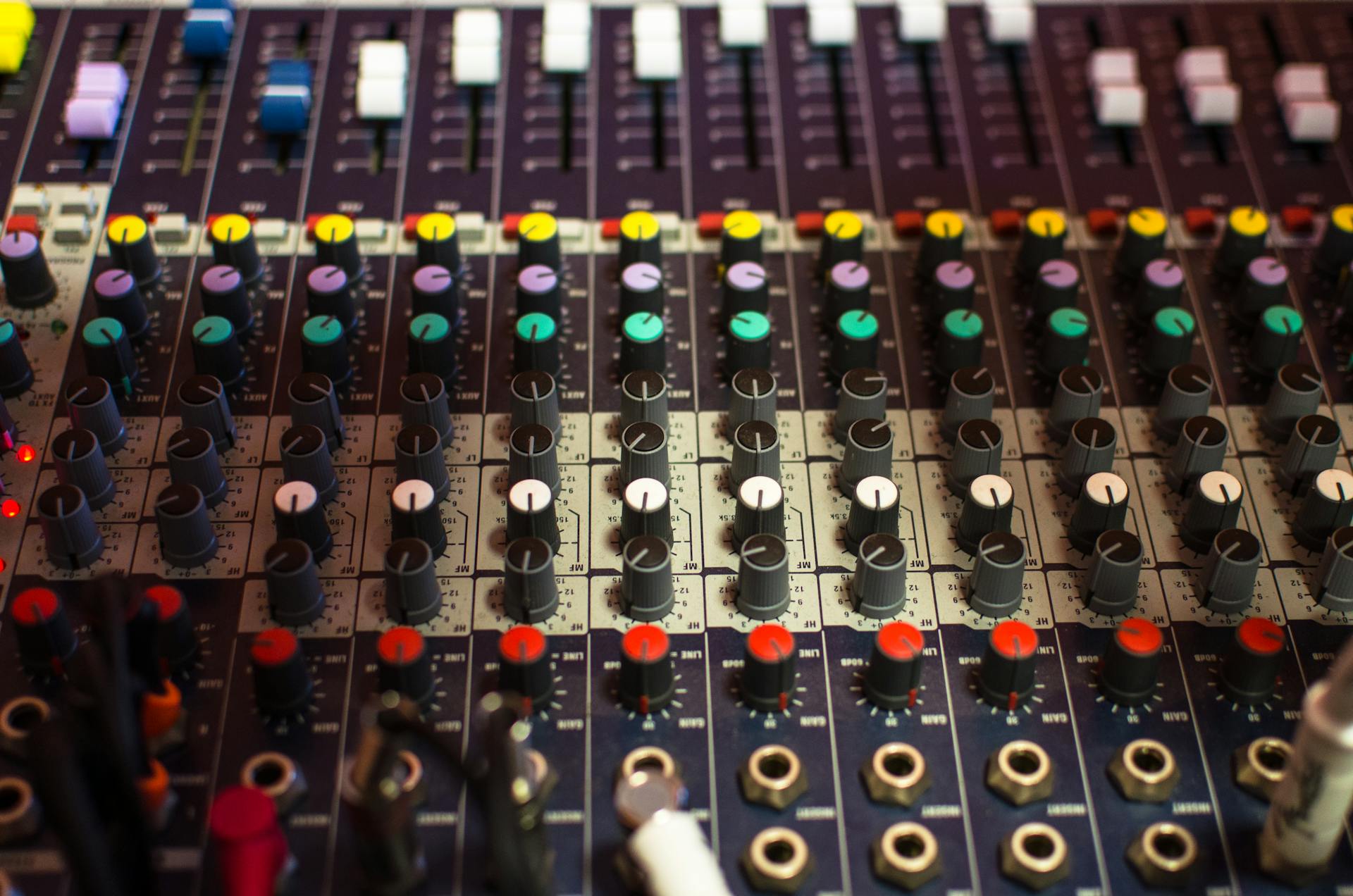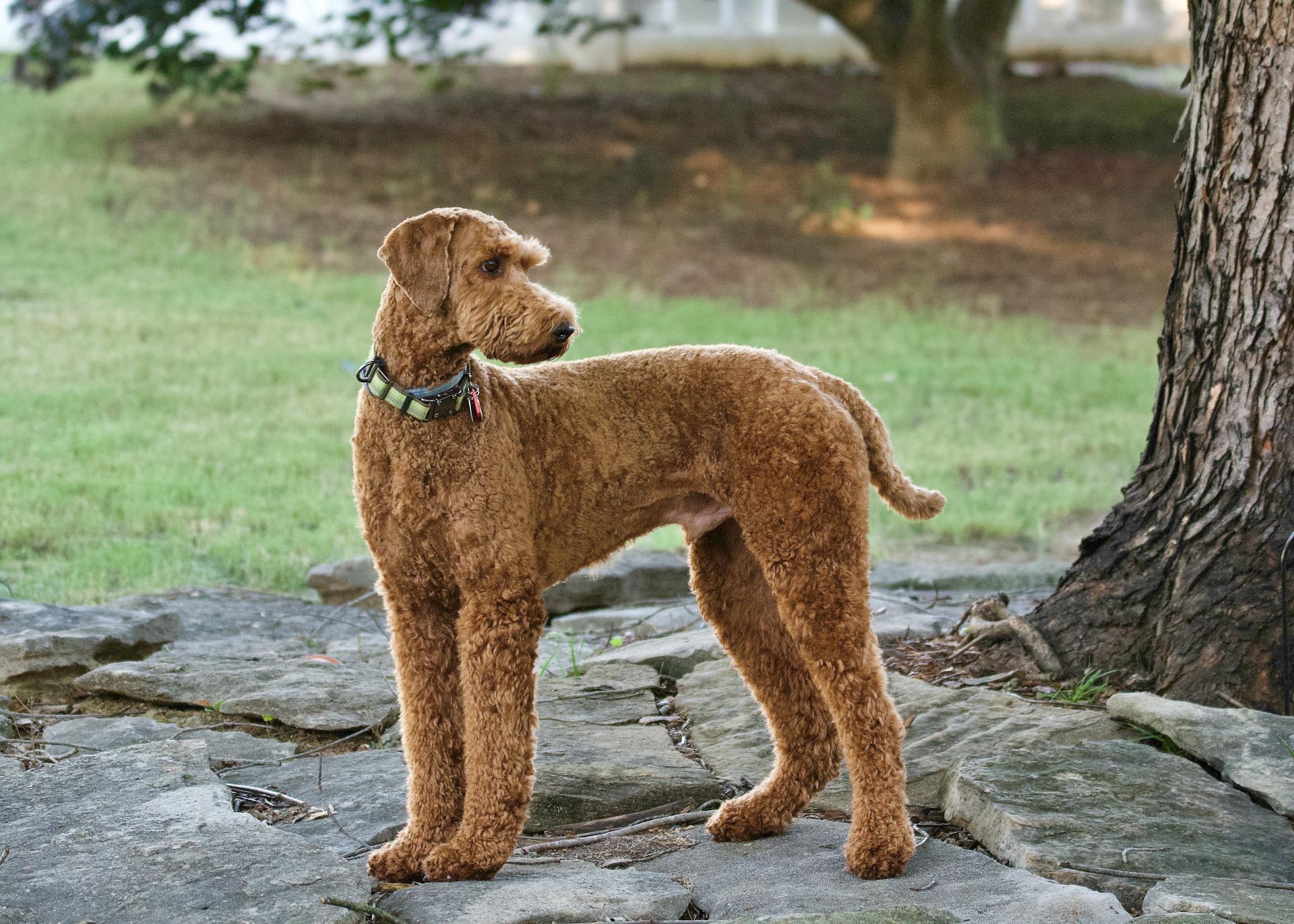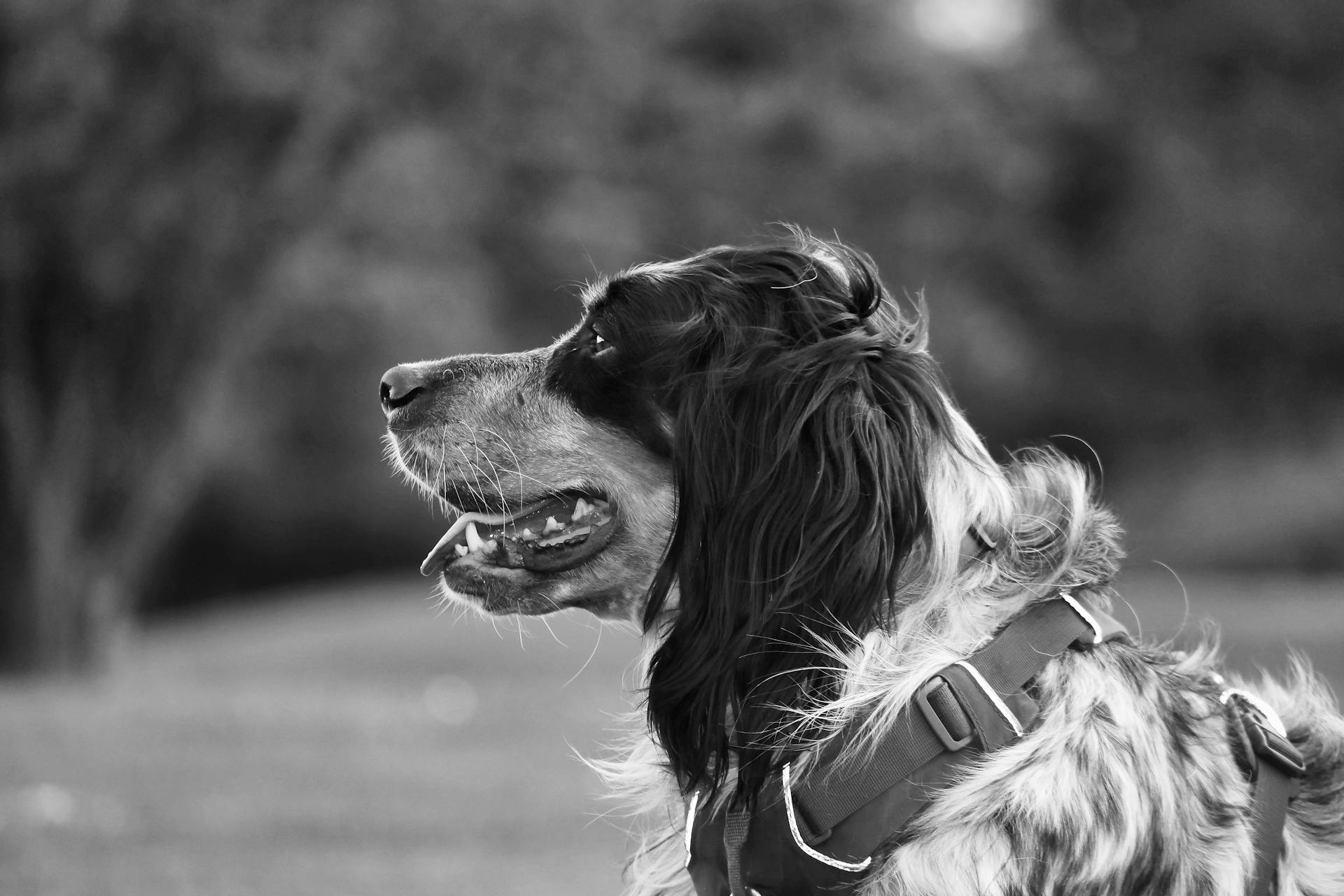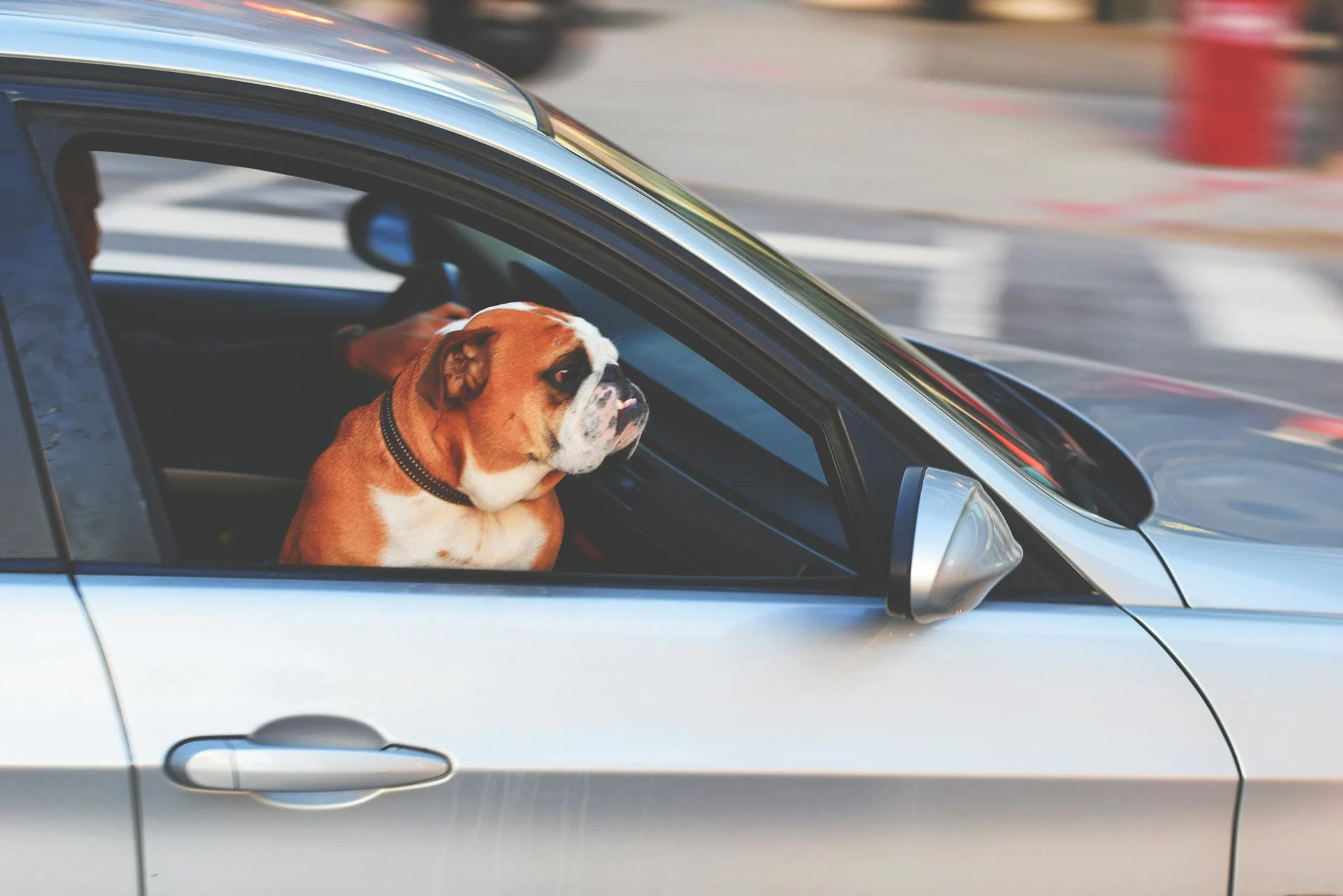
This breed is a gentle giant, weighing between 130-230 pounds and standing between 24-30 inches tall.
They have a short, easy-to-maintain coat that requires regular brushing to prevent matting.
Their exercise needs are moderate, requiring daily walks and playtime to keep them happy and healthy.
With proper training, this breed can thrive in a variety of living situations, from apartments to homes with yards.
Their loyalty and affection towards their family are unmatched, making them a great companion for many owners.
Physical Characteristics
Mastadors have a sturdy and robust build, inheriting the solid bone structure of Mastiffs.
Their bodies are well-muscled, and their chest is broad and deep.
They are much larger than Labs but smaller than Mastiffs.
Mastadors usually have a broad head with a short snout.
Their large, droopy flews (loose skin on the mouth) mean they drool significantly.
Their eyes are brown and hazel.
Mastadors weigh between 70 to 160 pounds (32 to 73 kg) or more.
They stand around 24 to 30 inches (61 to 76 cm) tall at the shoulder.
Their ears are pendant-shaped and drop down.
Temperament and Personality
The Lab and English Mastiff mix, also known as the Mastador, is a unique breed that combines the best qualities of both parent breeds.
Social interactions are a breeze for Mastadors, who thrive on human and animal companionship, but early socialization is crucial to ensure they're well-rounded and comfortable in different settings.
Their calm and even-tempered nature makes them excellent companions for families, even those with children, thanks to the Mastiff's influence.
Mastadors are highly responsive to positive reinforcement techniques during training, thanks to the Labrador's eagerness to please.
Exercise needs are moderate, combining the Labrador's enthusiasm for play with the Mastiff's more laid-back attitude, but regular exercise is still essential to keep them healthy and happy.
Some Mastadors may inherit the Mastiff's sensitivity to the emotional climate of the home, so it's essential to handle them gently and avoid stress.
Here are some common personality traits associated with Mastadors:
- Loyal
- Loving
- Alert
- Protective
- Soft
- Playful
- Eager to please
Mastadors are intelligent dogs, making training easier compared to some other breeds, and they're often described as gentle, likes to be together, and loves everyone.
While some Mastadors may be high shedders, they generally have similar grooming needs to average Labradors, requiring occasional grooming sessions.
Health and Care
Mastadors are prone to various health issues due to their parent breeds' genetic predispositions. They can experience hip and elbow dysplasia, which is a condition where the hip joint doesn't fit properly into the socket.
Bloat, also known as GDV, is a serious issue that can occur when the stomach twists due to the filling of air. This can be life-threatening if not treated promptly.
To maintain their health, Mastadors require a balanced and nutritious diet. A high-quality dog food with 30% protein and a healthy balance of vitamins, carbs, and minerals is essential.
Some common health issues in Mastadors include heart problems, cancer, ear infections, eye anomalies, joint problems, and respiratory issues. These conditions can be managed with proper care and attention.
Here are some common health issues in Mastadors:
- Hip (elbow) dysplasia
- Bloat / GDV
- Heart issues
- Cancer
- Ear infections
- Eye anomalies
- Joint Problems
- Respiratory Issues
Health and Lifespan
Mastadors are prone to various health issues due to their parent breeds' genetic predispositions. Hip dysplasia is a common problem in both Mastiffs and Labrador Retrievers, which can lead to arthritis and mobility issues.

Regular exercise is crucial to maintain your Mastador's joint health. A healthy diet and regular veterinary checkups can also help prevent or manage these issues.
Bloat, also known as GDV, is a life-threatening condition that can occur in Mastadors. It's essential to monitor your dog's eating habits and prevent overeating, especially after meals.
Cancer is a significant concern for Mastadors, with 47% of Mastiff deaths being cancer-related. Regular checkups and screenings can help detect cancer early on.
Mastadors can also suffer from ear infections, eye anomalies, and respiratory issues due to their brachycephalic traits. Keeping their ears clean and providing regular veterinary care can help prevent these issues.
Here are some common health issues that can affect Mastadors:
- Hip and elbow dysplasia
- Bloat
- Urinary infections
- Heart disease
- Canine cancer
- Progressive retinal atrophy (PRA)
- Ear infections
- Gum infections
Mastadors have a relatively long lifespan of 10 to 12 years, but proper care is essential to ensure they live a healthy and happy life. Regular exercise, a balanced diet, and routine veterinary checkups can help extend their lifespan.
Dietary Needs

Mastadors are large dogs requiring a balanced and nutritious diet to maintain health.
Their diet should be high in protein, ideally around 30%.
Providing a healthy balance of vitamins, carbs, and minerals is also crucial.
Choosing a high-quality dog food that's suitable for your Mastador's age, weight, and activity level is essential.
Puppies, in particular, need to eat puppy food to prevent them from growing too fast and developing orthopedic issues later on.
Care and Maintenance
Taking care of your lab and English mastiff mix is a big responsibility, but with the right routine, it can be a breeze. They have a short, dense coat that requires minimal grooming, but regular brushing can help remove loose hair and prevent matting.
You'll want to brush your dog regularly, especially during the busy seasons of Spring and Fall when they shed thousands of hairs. Brushing every few days during winter and summer is also a good rule of thumb.
To keep your lab and English mastiff mix's nails healthy, trim them regularly to prevent discomfort. Cleaning their ears with ear wipes twice a month can also help prevent infections.
Brushing your dog's teeth twice a week can help remove plaque, and using dental washes and chews on other days can keep their teeth clean. You may also need to have drying towels on hand if your dog drools a lot.
Here's a quick rundown of your lab and English mastiff mix's grooming needs:
- Brush regularly, especially during Spring and Fall
- Trim nails regularly
- Clean ears twice a month
- Brush teeth twice a week
- Use dental washes and chews on other days
- Have drying towels on hand
- Bathe monthly with a mild shampoo
Exercise and Training
Exercise and training are crucial for a Lab and English Mastiff mix. They require at least an hour of walking or jogging every day to prevent destructive behaviors like digging holes, being aggressive, protecting everyone in the house, and escaping.
Consistency is key when training your Mastiff Lab mix. Positive reinforcement training is essential, and it's best to start early when their brains are still malleable. Reward good behavior with treats, praise, or playtime, and ignore or redirect bad behavior.
A unique perspective: Training English Mastiff Puppies
Daily training sessions of 15-25 minutes are recommended, with play-breaks in between. As the puppy becomes an adult, make the training longer than the play time until you can go through at least 30-40 minutes of proper training without interruption.
One key to making the dog comply with your commands is to keep switching up the training habits. Make them fun and entertaining, as Mastiff Lab's are extremely smart dog breeds, and love it when new ways of training come about, especially if food is involved.
If you're an active person who is often outdoors, then a Mastiff Lab Mix is probably a good choice. They need plenty of regular exercise along with large family activities. However, if you're a busy person or someone who is gone from the house for long stretches of time, you can still own them, but make sure to take them for a 30-60 minute jog before you go to work, a half-hour brisk walk during lunch, and another long walk after work.
Here are some suggested low-impact exercises for your Mastiff Lab mix:
- Swimming: This is an excellent exercise that allows for full-body movement without the hard impact that comes from running or jumping.
- Walking: A simple but effective low-impact exercise, walking allows you to control the pace to suit your dog's needs.
- Tug-of-War: Played gently, this game can provide good mental and physical stimulation without high impact.
- Fetch on Soft Ground: If your dog enjoys fetch, try playing on soft ground like grass or sand to reduce the impact when they land.
- Indoor Obstacle Courses: Creating a simple obstacle course inside can allow for some exercise without high jumping or quick turns that could strain the joints.
Socialization and Suitability
Mastador puppies are great with kids due to their gentle temperaments, but it's essential to keep a close eye on them to prevent accidental harm.
They can grow quite large, so it's crucial to supervise interactions between kids and Mastador puppies.
Mastadors may have same-sex aggression, which means they might not get along with other dogs of the same sex, so proper socialization and training are vital.
Socialization is essential for any puppy, including Mastadors, to help them become well-adjusted and confident.
To socialize your Mastador puppy, take them out into the city where they can experience various sights, sounds, and smells.
This will help them become comfortable with new environments and reduce the likelihood of freaking out in response to loud noises or unexpected objects.
Finding and Adopting
Finding a reputable breeder or rescue organization is crucial when looking to adopt a Lab and English Mastiff mix. A good place to start is by checking with the Mastiff Club of America for a list of reputable breeders in your area.
Researching the breeder thoroughly will give you a good idea of the temperament and health of the dog you're considering adopting. You can also check the American Kennel Club (AKC) for a list of reputable breeders.
Visiting the breeder in person is essential to see the dogs' living conditions and meet the puppy's parents if possible. This will give you a firsthand look at the breeder's operation and help you make an informed decision.
Alternatively, you can consider adopting from a rescue organization. Some reputable rescue organizations for Lab and English Mastiff mixes include Mastiffs to Mutts, Happy Go Lucky Mastiff Rescue, and Lab Rescue CA.
Before adopting, it's essential to have all necessary supplies, such as food, bowls, a leash, and a crate. You should also schedule a visit with a veterinarian to ensure your new puppy is healthy and up-to-date on vaccinations.
To get started, here are some resources to consider:
- Your local shelters;
- Pet finder;
- Mastiffs to mutts;
- Happy Go Lucky Mastiff Rescue;
- Mastiff Club of America; and
- Lab rescue Ca.
Owner Experience
Life with a Lab and English Mastiff mix is a pleasurable experience. Owners of this mix breed often find it entertaining, with a good dose of loyalty.
Cuddly and playful are common descriptors of life with a Mastiff Lab mix. Owners generally find these traits endearing.
A lot of owners love the loyalty they receive from their Mastiff Lab mix.
For another approach, see: Average Lifespan Lab Mix
Frequently Asked Questions
How big do English Mastiff Lab mix get?
English Mastiff Lab mixes typically weigh between 100-200 pounds and stand 25-36 inches tall, making them a large and athletic breed. Their size can vary, but they often reach impressive heights and weights.
Featured Images: pexels.com


